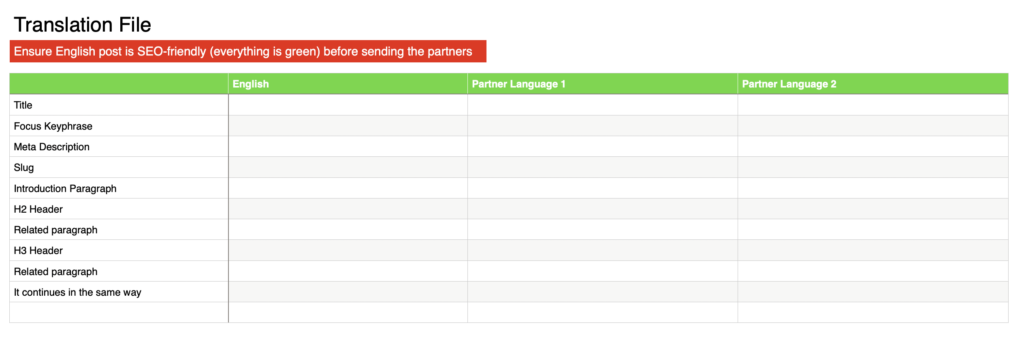Above all, “Effective SEO Techniques: A Comprehensive Guide” seeks to equip you with cutting-edge strategies in the digital marketing realm. Accordingly, SEO, or Search Engine Optimisation, has undergone significant changes over the years, and mastering these techniques is vital for anyone aiming for online success. Therefore, this guide offers actionable insights, from the foundational principles of SEO to advanced strategies, ensuring your online ventures achieve optimal visibility and growth. Indeed, let’s dive in to explore the exciting world of SEO! You can read the Turkish of this blog post in our sister organisation, MAT Foundation.
Understanding SEO: The Basics
Effective SEO Techniques: What is SEO?
SEO, or Search Engine Optimisation, refers to enhancing a website’s visibility in search engine results. This process involves optimising various website elements, including its content, structure, and the quality of backlinks it receives, to ensure it ranks higher for specific keywords or phrases. Therefore, a well-optimised website can attract more organic traffic, which often leads to increased brand awareness and sales. SEO strategies encompass both on-page factors, such as keyword placement and meta descriptions, and off-page elements, like obtaining high-quality links from authoritative websites. As search engine algorithms evolve, businesses must stay updated and adjust their SEO strategies to maintain or improve rankings.
What is Yoast SEO?
Yoast SEO is a popular WordPress plug-in that assists website owners in optimising their content for search engines. It provides a comprehensive set of tools and features that guide users in enhancing their website’s visibility in search engine results. These tools help optimise meta titles and descriptions and ensure the proper keyword density.
Additionally, Yoast SEO offers readability analysis, enabling content creators to produce reader-friendly articles. The plug-in also assists in creating XML sitemaps, setting canonical URLs, and integrating social media for better content sharing. Many website administrators and content creators use Yoast SEO to simplify and improve their search engine optimisation efforts.
Effective SEO Techniques: Why SEO is Essential for Erasmus+ Projects
SEO, or Search Engine Optimisation, holds significant importance for Erasmus+ Projects for several reasons:
Enhanced Visibility
Erasmus+ Projects often aim to share knowledge, tools, or resources with a broader audience. Effective SEO ensures that the project’s website or platform ranks higher in search engine results, making it easier for stakeholders, students, and educators to find the information they seek.
Increased Engagement
A well-optimised website can attract more organic traffic. With more visitors, there’s a higher likelihood of increased participation and engagement in Erasmus+ project activities, workshops, or events.
Credibility and Authority
Ranking higher in search engine results can lend credibility and authority to users who often perceive a website as more trustworthy and relevant when a website appears at the top of search engine results as appropriate.
Effective Dissemination
One of the core objectives of Erasmus+ Projects is disseminating results and findings and ensuring that the content reaches a broader audience, impact of the project’s impact.
Optimal Resource Utilisation
Erasmus+ Projects operate on allocated budgets. Investing in SEO can offer a cost-effective way to promote the project, unlike more expensive advertising campaigns.
Building Networks
A website that’s easy to find can attract the target audience and potential collaborators, partners, or institutions interested in similar themes or objectives.
In essence, SEO is a vital tool in maximising the reach, impact, and success of Erasmus+ Projects.
That’s why, as L4Y Learning For Youth, we insist on SEO-friendly content creation and training partners about it in our projects.
Importance of Keyword Research
Keyword research is a cornerstone of SEO because it informs content creators and marketers about the terms and phrases their target audience uses when searching for products, services, or information online. Here’s why keyword research is crucial:
Understanding Your Audience
It reveals your potential customers’ search terms, which helps you understand their needs and interests.
Content Relevance
By knowing the popular keywords, you can create content that is more likely to be found by your target audience, increasing the relevance of your website to user queries.
Search Engine Rankings
Properly optimised content with the right keywords can rank higher in search engine results pages (SERPs), increasing visibility.
Competition Analysis
Keyword research allows you to see the competitive landscape. Knowing which keywords your competitors, target can help you strategise and find niche segments or opportunities.
Marketing Strategy
Keywords can inform content creation and broader marketing and advertising strategies, guiding where and how to promote products or services.
User Intent
Different keywords signify different user intents — from informational to transactional. Understanding the plan helps tailor content to guide users along the customer journey.
Trends
Keeping up with trending keywords can keep your content current and relevant, which may attract more traffic and engagement.
Conversion Optimisation
By targeting keywords with high conversion rates, you can drive more qualified traffic to your site, likely leading to sales.
In essence, keyword research helps align your content strategy with user demand, market trends, and competitive landscapes, paving the way for better engagement and conversion rates.
Effective SEO Techniques: AI Prompt to Decide Focus Keyphrase, Title, Meta Description
Use the below prompt if you want to
In. our case the TOPIC is “SEO-friendly Content Creation.” You can use detail information about your blog post.
For the [TOPIC] topic. As an SEO expert, please generate an SEO-friendly focus key phrase with a maximum of 4 words, like I am 15 years old. A slug of focus key phrase. A title including a focus key phrase at the beginning. A meta description that includes a focus key phrase at the beginning, less than 140 characters, and a call to action. Please create a table of contents and an introduction paragraph with the title at the beginning. Use British English; do not use passive voice.
How to Use Yoast SEO
Please make sure your blog post is well-researched, well-structured, and original. Quality content naturally attracts more readers and shares.
Use the Yoast SEO meta box.
Below your post editor, you will see a Yoast SEO Metabox. This is where most of your SEO work will happen.
After generating the focus keyphrase, meta description, and slug, you can put them on your blog post.
Focus Keyphrase
Enter your chosen keyword or keyphrase in the ‘Focus keyphrase’ field. Yoast SEO will analyse your content and provide recommendations based on this keyword.
Snippet Preview
Here, you can preview how your post will appear in search results.
SEO Title
Make sure your keyword or keyphrase appears in the SEO title. It should be catchy and relevant to the content. Yoast SEO plug-in automatically adds to there from the title. You need to shorten it if it has too many characters. (orange or red)
Slug
This is the URL. Please make sure it’s a manageable length, and it should have your focus keyword. Just add use focus keyphrase by adding “-” between words. Do not use any capital letters.
Meta Description
Following, write a meta description that describes what your post is about. Also, please make sure your keyword or keyphrase appears here.
Social
Add a picture, title, and description to the social part of the meta box
Yoast SEO Plug-in: SEO Analysis
Outbound Links
It is essential to know how to create outbound links. Always click open in the new tab and no-follow if it’s not related to the organisations in the project. There should be at least one follow-up external link for partners or sister organisations. Not for others, because we gift one point by backlinking them while losing one point of our website.
Images
Indeed, image names should consist of focus keyphrase
Internal Links
It gives links to other posts and categories on the website
Keyphrase Density
Similar to what is used in subheadings, there should be enough time to focus on the keyphrase in your text.
Keyphrase in Subheadings
Use focus keyphrases enough times in your H2 and H3 headings, varying according to the text length.
Keyphrase in Introduction
In the first paragraph of the blog post, you should use the focus keyphrase.
Keyphrase in SEO Title
SEO title = Title of the blog post; if it is orange or red, shorten it until it turns green
Keyphrase Length
The keyphrase could not be more than four words
Keyphrase in Meta Description
It is essential to use your keyphrase in the meta description
Meta Description Length
It should be less than 140 characters. The colour will be green.
Previously Used Keyphrase
In your website, use unique keyphrases
Keyphrase in Slug
It should be in the slug
Text Length
More than 300 words
SEO-title Width
Also, It should be green.
Readability Analysis
Transition Words
Consequently, the percentage of translation words should be 30%; you can highlight them by clicking the eye figure on the right-hand side of the Translation Words in the Readability Analysis part of Yoast SEO.
Passive Voice
By clicking the eye figure on the right, you can see which sentences are passive and make them active until the Passive Voice turns green.
Consecutive Sentences
No more than three sentences begin with the exact words; correct them until the part turns green.
Subheading Distribution
Headings help users and search engines to read and understand text. For example, they act as signposts for the readers, making it easier for them to figure out what a post or page is about. Headings also define which parts of your content are essential and show how they’re interconnected
How to use headings on your site
Paragraph Length
None of the paragraphs can be more than 300 words. If the Paragraph Length is red or green, find the section and add more H headers until it turns green.
Sentence Length
No more than twenty words in a sentence. By clicking the eye figure on the right, you highlight the long sentences and make them short by morning into two sentences or more.
Importance of Quality Backlinks
Quality backlinks are essential for SEO-friendliness for several reasons
Authority and Trust
Firstly, search engines view backlinks as votes of confidence. When your content receives links from reputable, high-authority sites, it signals to search engines that it is trustworthy and valuable. This perceived endorsement can significantly boost your site’s credibility and authority.
Improved Rankings
Secondly, high-quality backlinks can enhance your website’s ranking position in the search engine results pages (SERPs). Search engines like Google use backlinks as a significant ranking signal because they indicate the content’s reliability and usefulness to users.
Referral Traffic
Thirdly, besides the SEO benefits, backlinks can drive direct traffic to your site. However, users clicking these links are often interested in your content, leading to increased referral traffic and potentially higher engagement and conversions.
Effective SEO Techniques: Indexing
Search engines discover new web pages by following links from existing ones. Quality backlinks can help search engine bots find and index your content more quickly, which is particularly beneficial for new or less prominent websites.
Networking and Relationships
Moreover, earning backlinks often requires outreach and the development of relationships with other website owners, bloggers, and industry leaders. This networking can lead to further collaboration, increased brand exposure, and new opportunities.
Effective SEO Techniques: Brand Building
Eventually, quality backlinks from authoritative sites can contribute to brand building. They also can establish your website as an authority in your niche, helping to build your brand’s reputation online.
Long-Term Value
Finally, unlike paid advertising, which stops traffic once the campaign ends, backlinks can continue to drive traffic and influence your SEO rankings positively over a more extended period.
It is crucial to note that not all backlinks are created equal. Links from high-quality, relevant websites have much more value than those from spammy or irrelevant sites. Poor-quality backlinks can harm your SEO efforts due to Google’s algorithms that penalise unnatural or manipulative linking practices. Therefore, when building backlinks, the focus should always be on quality over quantity.
Effective SEO Techniques: How to Prepare Translation Files For Partners
L4Y employees should know every point below to share the translation file with partners. Additionally, they are responsible for the English post is SEO-friendly.

Guidelines for Preparing SEO-Friendly Translation Documents
SEO Compatibility: All English blog posts should be SEO-friendly before being sent to our partners for translation.
Rationale: Our partners require clarity on essential SEO elements such as Focus Keyphrases, Title, Meta Descriptions, and Slugs. Ensuring these elements are present in the translation document streamlines their task and enhances the quality of translations.
Document Structure: Please structure the translation documents to include h2, h3, and h4 headings. After that, ensure you list paragraphs under these headings separately. Such a structure facilitates easier insertion onto our website, making the transition seamless and efficient.
Translation Template: Refer to the template translation file provided on the subsequent page for consistency. We expect all team members to use this template when preparing documents for translation.
By adhering to these guidelines, we can maintain the highest standards of content quality, ensuring that our online presence remains robust and easily accessible to our global audience.
For Partners: How to Transfer Translation Files to Local Language Websites
This part is related to the Erasmus+ Project partners to understand how to create a blog post using a translation file.
Effective SEO Techniques: Conclusion
In Conclusion, we train our staff and partners with this blog post about how to use SEO-friendliness in blog posting. Also, we focused on how to do it in the EU-funded projects in each partner language. We will train partners during the project. However, this post will help them to understand everything they need to do.
When the English blog post is SEO-friendly, the translations to local languages will also be SEO-friendly in that language. Before sending the translation file to the partners, our employees ensure everything is green in the English post. Otherwise, partners need to make it SEO-friendly, which is not practical.















